Revenue models are strategic frameworks that businesses use to generate income. They outline the methods and sources through which a company earns money from its operations. These models are crucial for understanding how a business can sustain itself financially and achieve long-term success.
Importance of Revenue Models
Revenue models are vital for several reasons. They help businesses:
- Identify and optimize income streams
- Forecast future earnings
- Allocate resources efficiently
- Attract investors by demonstrating a clear path to profitability
A well-defined revenue model can be the difference between a thriving business and one that struggles to stay afloat.
Types of Revenue Models
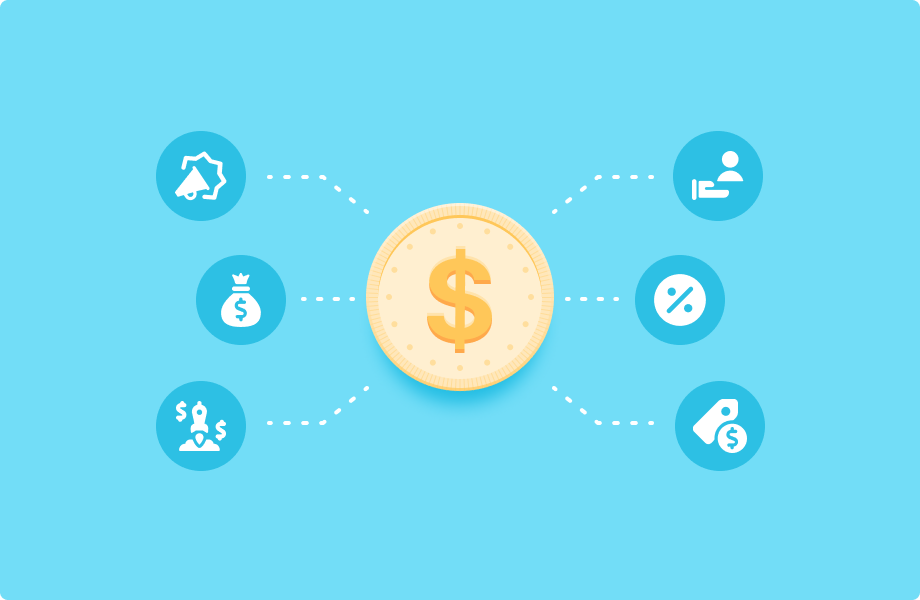
There are various types of revenue models, each suited to different business types and industries. Some common revenue models include:
Subscription Model
In this model, customers pay a recurring fee at regular intervals (monthly, yearly) to access a product or service. Examples include streaming services like Netflix and software-as-a-service (SaaS) platforms like Adobe Creative Cloud.
Advertising Model
Businesses generate revenue by displaying advertisements to their users. This model is prevalent in media and online platforms, such as Google and Facebook, where user data is leveraged to target ads effectively.
Transactional Model
Revenue is earned through direct sales of goods or services. This model is common in retail and e-commerce businesses like Amazon and traditional brick-and-mortar stores.
Freemium Model
A combination of “free” and “premium,” this model offers basic services for free while charging for advanced features. Companies like Spotify and LinkedIn use this model to attract a large user base and convert a portion of them into paying customers.
Licensing Model
Businesses earn revenue by licensing their intellectual property, such as software, patents, or trademarks, to other companies. This model is often used by technology firms and content creators.
Factors Influencing Choice of Revenue Model
Several factors influence the choice of a revenue model, including:
- Market Demand: Understanding customer needs and preferences can guide the selection of a suitable revenue model.
- Competitive Landscape: Analyzing competitors’ revenue models can provide insights and help differentiate a business.
- Cost Structure: The costs associated with delivering a product or service can impact the feasibility of certain revenue models.
- Scalability: The ability to scale operations and revenue streams is crucial for long-term growth.
Evolution of Revenue Models
Revenue models are not static; they evolve with market trends, technological advancements, and consumer behavior. Businesses must continuously assess and adapt their revenue models to stay competitive and meet changing demands. For instance, the rise of digital platforms has led to the proliferation of subscription and freemium models, while advancements in data analytics have enhanced the effectiveness of advertising models.
Types of Revenue Models
Subscription-Based Model
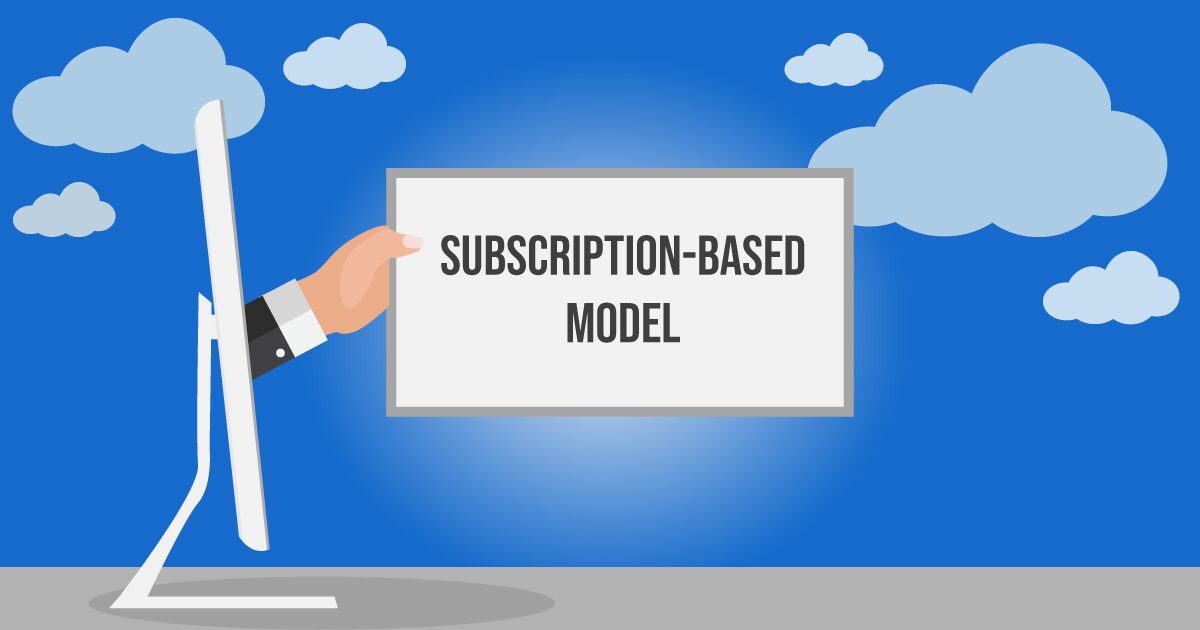
The subscription-based model involves customers paying a recurring fee at regular intervals, typically monthly or annually, to access a product or service. This model is popular among software-as-a-service (SaaS) companies, streaming services, and membership-based businesses. The key advantage is the predictability of revenue, which aids in financial planning and stability. Companies can also build long-term relationships with customers, leading to higher lifetime value.
Freemium Model
The freemium model offers basic services for free while charging for premium features. This approach is common in digital products like mobile apps, software, and online services. The free tier attracts a large user base, and a percentage of these users convert to paying customers for enhanced functionalities. This model relies on the value proposition of premium features to drive revenue.
Advertising-Based Model
In the advertising-based model, businesses generate revenue by displaying ads to their users. This model is prevalent in media, social networks, and search engines. Companies like Google and Facebook leverage user data to offer targeted advertising, which can command higher ad rates. The success of this model depends on high user engagement and effective ad placements.
Transaction-Based Model
The transaction-based model involves earning revenue through direct sales of goods or services. This model is typical for e-commerce platforms, retail stores, and service providers. Revenue is generated each time a transaction occurs, making it essential to maintain a steady flow of customers. Businesses often use strategies like discounts, loyalty programs, and marketing campaigns to drive sales.
Licensing and Royalties Model
In the licensing and royalties model, businesses earn revenue by allowing others to use their intellectual property, such as patents, trademarks, or copyrighted material. This model is common in industries like entertainment, pharmaceuticals, and technology. Companies receive a fee or a percentage of sales from the licensee, providing a steady income stream without the need for direct sales.
Affiliate Marketing Model
The affiliate marketing model involves earning commissions by promoting other companies’ products or services. Affiliates use various marketing channels, such as blogs, social media, and email campaigns, to drive traffic to the merchant’s site. When a sale is made through the affiliate’s referral, they earn a commission. This model is performance-based, incentivizing affiliates to generate sales.
Usage-Based Model
The usage-based model charges customers based on their consumption of a product or service. This model is common in utilities, telecommunications, and cloud computing services. Customers pay for what they use, which can be more cost-effective for them and provide a scalable revenue stream for the business. This model requires accurate tracking and billing systems to manage usage data.
Direct Sales Model
The direct sales model involves selling products or services directly to consumers without intermediaries. This approach is used by companies that want to maintain control over their sales process and customer relationships. Direct sales can occur through various channels, including online stores, physical retail locations, and direct marketing. This model allows businesses to capture the full profit margin but requires significant investment in sales and marketing efforts.
Franchise Model
The franchise model allows businesses to expand by licensing their brand, business model, and operational procedures to third-party operators. Franchisees pay an initial fee and ongoing royalties to the franchisor. This model enables rapid growth with lower capital investment from the franchisor, while franchisees benefit from established brand recognition and support. The success of this model depends on maintaining consistent quality and brand standards across all locations.
Hybrid Model
The hybrid model combines elements from multiple revenue models to create a diversified income stream. For example, a company might use a subscription model for its core service while also generating revenue through advertising and affiliate marketing. This approach allows businesses to leverage the strengths of different models and mitigate risks associated with relying on a single revenue source.
Subscription-Based Revenue Model
Definition and Overview

A subscription-based revenue model is a business strategy where customers pay a recurring fee at regular intervals (monthly, quarterly, or annually) to access a product or service. This model is prevalent in various industries, including software, media, and consumer goods, and is designed to create a steady and predictable revenue stream.
Key Components
Recurring Payments
The core of the subscription model is the recurring payment structure. Customers commit to paying a set amount at regular intervals, which ensures a continuous flow of revenue for the business.
Customer Retention
Customer retention is crucial in a subscription model. Businesses must focus on delivering consistent value to keep subscribers engaged and reduce churn rates. This often involves regular updates, customer support, and loyalty programs.
Tiered Pricing
Many subscription services offer tiered pricing plans to cater to different customer needs and budgets. These tiers can range from basic to premium, with varying levels of access and features.
Benefits
Predictable Revenue
One of the primary advantages of the subscription model is the predictability of revenue. Businesses can forecast income more accurately, which aids in budgeting and financial planning.
Customer Loyalty
Subscription models often lead to higher customer loyalty. Subscribers are more likely to stay with a service they are consistently paying for, especially if they perceive ongoing value.
Upselling Opportunities
With a subscription model, businesses have multiple touchpoints with customers, providing opportunities to upsell additional features or higher-tier plans.
Challenges
Churn Management
Managing churn is a significant challenge. Businesses must continuously engage and provide value to prevent subscribers from canceling their subscriptions.
Initial Acquisition Costs
Acquiring new subscribers can be costly. Marketing and promotional efforts to attract new customers require substantial investment, which can impact short-term profitability.
Service Delivery
Ensuring consistent and high-quality service delivery is essential. Any lapse in service can lead to customer dissatisfaction and increased churn rates.
Examples of Successful Subscription Models
Software as a Service (SaaS)

Companies like Adobe and Microsoft have successfully transitioned to subscription models, offering their software products on a recurring payment basis.
Streaming Services
Netflix and Spotify are prime examples of media companies thriving on subscription-based revenue, providing continuous access to content for a monthly fee.
Subscription Boxes
Businesses like Birchbox and Dollar Shave Club deliver curated products to customers’ doorsteps on a subscription basis, creating a unique and personalized experience.
Best Practices
Onboarding Process
A smooth and informative onboarding process helps new subscribers understand the value of the service and how to use it effectively, reducing early churn.
Regular Updates and Improvements
Continuously updating the product or service keeps it relevant and valuable to subscribers, encouraging long-term retention.
Customer Feedback
Actively seeking and incorporating customer feedback helps improve the service and demonstrates that the business values its subscribers’ opinions.
Metrics to Track
Monthly Recurring Revenue (MRR)

MRR is a critical metric that measures the predictable revenue generated from subscriptions each month.
Customer Lifetime Value (CLV)
CLV estimates the total revenue a business can expect from a single customer over the duration of their subscription.
Churn Rate
The churn rate indicates the percentage of subscribers who cancel their subscriptions within a given period. Lowering the churn rate is essential for sustaining growth.
Conclusion
Understanding and effectively implementing a subscription-based revenue model can lead to sustained business success. By focusing on customer retention, delivering consistent value, and continuously improving the service, businesses can create a loyal customer base and a predictable revenue stream.
Transaction-Based Revenue Model
Definition and Overview
A transaction-based revenue model is a business model where revenue is generated from individual transactions. Each time a customer makes a purchase, the business earns revenue. This model is prevalent in various industries, including retail, e-commerce, and services. It is straightforward and easy to understand, making it a popular choice for many businesses.
Key Characteristics
Direct Revenue Generation
Revenue is directly tied to sales transactions. Each sale contributes to the overall revenue, making it easy to track and measure performance.
Scalability
The model is highly scalable. As the number of transactions increases, so does the revenue. This scalability makes it suitable for businesses looking to grow rapidly.
Customer Interaction
Frequent customer interactions are a hallmark of this model. Each transaction represents an opportunity to engage with customers, gather feedback, and build relationships.
Examples of Transaction-Based Revenue Models
Retail Stores
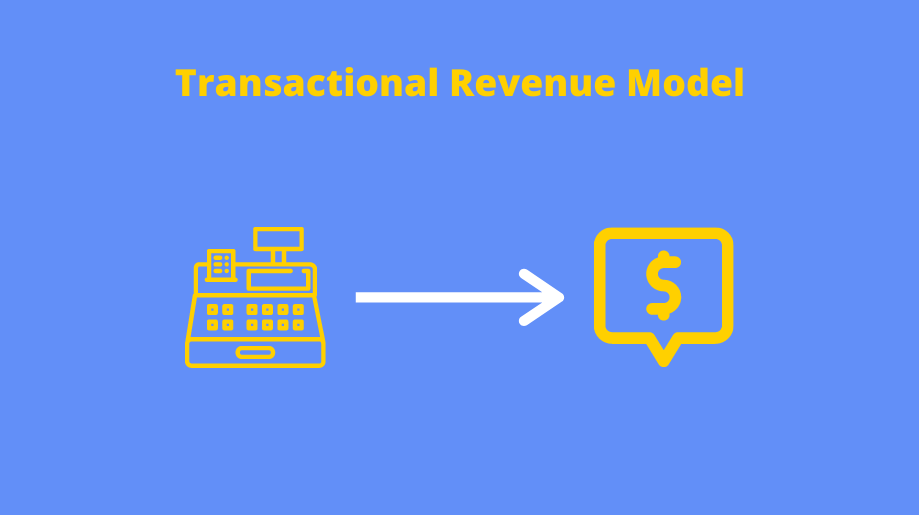
Traditional brick-and-mortar retail stores operate on a transaction-based revenue model. Each sale of a product generates revenue for the store.
E-commerce Platforms
Online marketplaces like Amazon and eBay also use this model. Revenue is earned from each transaction made on their platforms.
Service Providers
Service-based businesses, such as consulting firms or freelance professionals, charge clients per service rendered, generating revenue from each transaction.
Advantages
Predictable Revenue Stream
The model provides a predictable revenue stream, as each transaction directly contributes to the overall income. This predictability aids in financial planning and forecasting.
Simple to Implement
It is relatively simple to implement and manage. Businesses can easily track sales and revenue, making it straightforward to analyze performance and make informed decisions.
Customer Insights
Frequent transactions offer valuable insights into customer behavior and preferences. This data can be used to tailor offerings and improve customer satisfaction.
Challenges
Revenue Fluctuations

Revenue can fluctuate based on the number of transactions. Seasonal variations, market trends, and economic conditions can impact sales, leading to inconsistent revenue streams.
High Competition
The model often operates in highly competitive markets. Businesses must continuously innovate and differentiate themselves to attract and retain customers.
Dependency on Sales Volume
Success is heavily dependent on sales volume. Businesses must maintain a steady flow of transactions to ensure consistent revenue, which can be challenging in saturated markets.
Strategies for Success
Enhancing Customer Experience
Providing exceptional customer service and a seamless purchasing experience can encourage repeat transactions and build customer loyalty.
Diversifying Product Offerings
Offering a diverse range of products or services can attract a broader customer base and increase the number of transactions.
Leveraging Technology
Utilizing technology, such as e-commerce platforms, CRM systems, and data analytics, can streamline operations, enhance customer interactions, and drive sales.
Marketing and Promotions
Effective marketing strategies and promotional campaigns can boost visibility, attract new customers, and increase transaction volume.
Advertising-Based Revenue Model
Definition and Overview
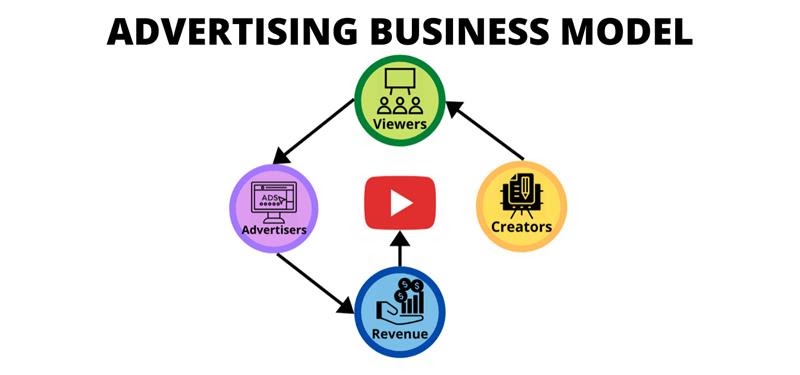
The advertising-based revenue model is a business strategy where companies generate income by displaying advertisements on their platforms. This model is prevalent in media, online services, and mobile applications. Companies offer free or subsidized content to attract a large audience, which in turn attracts advertisers willing to pay for exposure to that audience.
Types of Advertising
Display Advertising
Display advertising involves banner ads, video ads, and other visual formats placed on websites, apps, or social media platforms. These ads can be static or dynamic and are often targeted based on user behavior and demographics.
Pay-Per-Click (PPC)
In the PPC model, advertisers pay a fee each time their ad is clicked. This model is commonly used in search engine advertising, where ads appear alongside search results. Google AdWords is a prime example of a PPC platform.
Native Advertising
Native advertising integrates ads seamlessly into the content, making them less intrusive. These ads match the form and function of the platform on which they appear, such as sponsored articles or social media posts.
Video Advertising
Video advertising includes pre-roll, mid-roll, and post-roll ads that play before, during, or after video content. Platforms like YouTube and Facebook use this model extensively.
Social Media Advertising
Social media platforms like Facebook, Instagram, and Twitter offer targeted advertising options based on user data. These ads can be in the form of sponsored posts, stories, or promoted tweets.
Key Metrics
Impressions
Impressions measure how often an ad is displayed, regardless of whether it is clicked. This metric helps advertisers understand the reach of their campaigns.
Click-Through Rate (CTR)
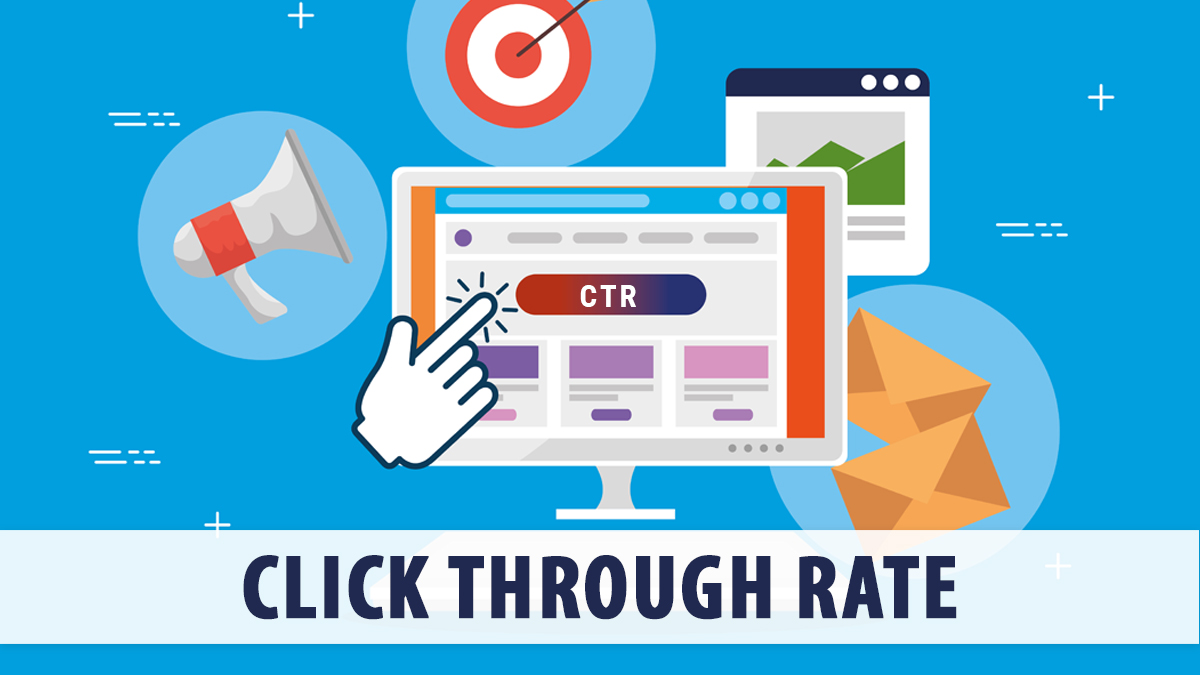
CTR is the ratio of users who click on an ad to the number of total users who view the ad. A higher CTR indicates more effective advertising.
Cost Per Mille (CPM)
CPM stands for cost per thousand impressions. It is a common pricing model where advertisers pay a set fee for every thousand times their ad is shown.
Conversion Rate
The conversion rate measures the percentage of users who take a desired action after clicking on an ad, such as making a purchase or signing up for a newsletter.
Advantages
Scalability
The advertising-based revenue model is highly scalable. As the user base grows, the potential for ad revenue increases proportionally.
Low Barrier to Entry
This model often requires minimal upfront investment, making it accessible for startups and small businesses.
Flexibility
Businesses can experiment with different types of ads and targeting strategies to optimize revenue.
Challenges
Ad Blockers

The increasing use of ad blockers can significantly reduce the effectiveness of online advertising, impacting revenue.
User Experience
Excessive or intrusive ads can negatively affect user experience, leading to lower engagement and higher churn rates.
Dependence on Traffic
This model relies heavily on high traffic volumes. Any decline in user numbers can directly impact revenue.
Best Practices
Targeted Advertising
Using data analytics to target ads based on user behavior and preferences can improve ad relevance and effectiveness.
Quality Content
High-quality content attracts more users, providing a larger audience for advertisers and increasing potential revenue.
Diversification
Diversifying ad formats and platforms can mitigate risks associated with changes in user behavior or platform policies.
Compliance
Ensuring compliance with advertising regulations and user privacy laws is crucial to maintain trust and avoid legal issues.
Licensing and Franchising Revenue Model
Licensing Revenue Model

Definition and Overview
Licensing is a business arrangement in which one company (the licensor) gives another company (the licensee) permission to manufacture its product, use its brand, or employ its technology for a specified period. This model allows licensors to generate revenue through licensing fees or royalties without the need to invest in production or distribution.
Key Components
- Licensor and Licensee Relationship: The licensor owns the intellectual property (IP) and grants rights to the licensee. The licensee benefits from using established IP to enhance their product offerings.
- Licensing Agreement: A formal contract that outlines the terms, including the scope of use, duration, territory, and financial arrangements.
- Royalties and Fees: The licensee typically pays the licensor an upfront fee and ongoing royalties based on sales or usage metrics.
Advantages
- Revenue Generation: Provides a steady stream of income through royalties and fees.
- Market Expansion: Enables licensors to enter new markets without significant investment.
- Risk Mitigation: Reduces financial risk as the licensee handles production and distribution.
Challenges
- Quality Control: Ensuring the licensee maintains the quality and reputation of the licensor’s brand.
- Dependency:The licensor’s revenue is dependent on the licensee’s performance.
- Legal and Compliance Issues: Navigating different legal environments and ensuring compliance with local regulations.
Franchising Revenue Model
Definition and Overview
Franchising is a business model where a franchisor grants a franchisee the right to operate a business using the franchisor’s brand, products, and business model. The franchisee pays an initial franchise fee and ongoing royalties to the franchisor.
Key Components
- Franchisor and Franchisee Relationship: The franchisor provides the brand, business model, and support, while the franchisee operates the business under the franchisor’s guidelines.
- Franchise Agreement: A detailed contract that specifies the rights and obligations of both parties, including fees, operational standards, and support services.
- Initial Fees and Royalties: The franchisee pays an initial fee to join the franchise system and ongoing royalties based on revenue or profits.
Advantages
- Brand Expansion: Allows franchisors to expand their brand presence rapidly with lower capital investment.
- Revenue Streams: Generates revenue through initial fees, royalties, and sometimes additional services or products sold to franchisees.
- Operational Efficiency: Franchisees are motivated to perform well as they own their business, leading to potentially higher operational efficiency.
Challenges
- Consistency and Control: Maintaining consistent quality and service standards across all franchise locations.
- Franchisee Selection: Choosing the right franchisees who align with the brand’s values and operational standards.
- Support and Training: Providing adequate support and training to ensure franchisees succeed.
Comparison of Licensing and Franchising
Similarities
- Revenue Generation: Both models generate revenue through fees and royalties.
- Brand Leverage: Both leverage established brands to expand market presence.
- Contractual Agreements: Both require detailed contracts to outline terms and conditions.
Differences
- Control: Franchising typically involves more control over the franchisee’s operations compared to licensing.
- Investment: Franchising often requires a higher initial investment from the franchisee than licensing does from the licensee.
- Support: Franchisors usually provide more extensive support and training compared to licensors.
Freemium and Pay-What-You-Want Models
Freemium Model

Definition and Concept
The freemium model is a pricing strategy where a basic product or service is provided free of charge, while more advanced features or functionalities are offered at a premium. This model is widely used in the software industry, particularly for apps and online services.
Advantages
- User Acquisition: By offering a free version, companies can attract a large number of users quickly. This helps in building a user base and increasing brand awareness.
- Upselling Opportunities: Once users are engaged with the free version, they are more likely to convert to paying customers for additional features or services.
- Market Penetration: Freemium allows companies to penetrate markets that are price-sensitive, making it easier to compete with other free offerings.
Challenges
- Conversion Rates: One of the main challenges is converting free users to paying customers. The conversion rate can be low, requiring a large user base to be profitable.
- Cost Management: Maintaining a free version can be costly, especially if it requires significant resources for customer support and infrastructure.
- Feature Balancing: Companies need to carefully balance the features offered in the free version versus the premium version to ensure that the free version is useful but not so comprehensive that users have no incentive to upgrade.
Examples
- Spotify: Offers a free version with ads and limited features, while the premium version provides an ad-free experience and additional functionalities.
- LinkedIn: Provides basic networking features for free, with premium subscriptions offering advanced tools for job seekers and recruiters.
Pay-What-You-Want Model
Definition and Concept
The Pay-What-You-Want (PWYW) model allows customers to choose the amount they want to pay for a product or service, including the option to pay nothing at all. This model relies on the goodwill and perceived value of the offering.
Advantages
- Customer Trust and Loyalty: By giving customers control over pricing, companies can build trust and foster loyalty. Customers may feel more valued and respected.
- Market Differentiation: PWYW can set a company apart from competitors, creating a unique selling proposition that attracts attention.
- Data Collection: This model can provide valuable insights into how much customers are willing to pay, helping to inform future pricing strategies.
Challenges
- Revenue Uncertainty: The most significant challenge is the unpredictability of revenue. Some customers may choose to pay very little or nothing at all.
- Perceived Value: There is a risk that customers may perceive the product or service as low-quality if they can pay any amount they wish.
- Sustainability: Long-term sustainability can be an issue if the majority of customers opt to pay less than the cost of providing the product or service.
Examples
- Radiohead’s “In Rainbows” Album: The band released their album online with a PWYW pricing model, allowing fans to download it for any price they chose.
- Panera Bread’s “Panera Cares” Cafes: These community cafes allowed customers to pay what they could afford, aiming to address food insecurity while still operating sustainably.
Choosing the Right Revenue Model for Your Business
Understanding Your Market and Customer Base

Market Analysis
Conducting a thorough market analysis is crucial. This involves understanding the size of your market, the competitive landscape, and the needs and preferences of your potential customers. Market analysis helps in identifying gaps and opportunities that can be leveraged through an appropriate revenue model. Why not reach out to Exec Capital.
Customer Segmentation
Segmenting your customer base allows you to tailor your revenue model to different groups. Consider factors such as demographics, purchasing behavior, and customer needs. This segmentation can help in choosing a model that maximizes revenue from each segment.
Evaluating Different Revenue Models
Subscription Model
The subscription model involves customers paying a recurring fee at regular intervals (monthly, yearly, etc.). This model is suitable for businesses offering ongoing services or content, such as SaaS companies, streaming services, and membership-based organizations.
Freemium Model
The freemium model offers basic services for free while charging for premium features. This model works well for digital products and services, allowing businesses to attract a large user base and convert a portion of them into paying customers.
Transaction-Based Model
In a transaction-based model, revenue is generated from individual transactions. This model is common in e-commerce, retail, and service-based industries. It relies on high transaction volumes and can be enhanced with upselling and cross-selling strategies.
Advertising Model
The advertising model generates revenue by displaying ads to users. This model is prevalent in media, social networks, and content-driven websites. It requires a large user base and high engagement levels to attract advertisers.
Licensing and Royalties
Licensing involves granting permission to use intellectual property in exchange for a fee. This model is common in software, media, and technology industries. Royalties are similar but typically involve ongoing payments based on usage or sales.
Aligning with Business Goals and Resources

Scalability
Consider how scalable the revenue model is. A scalable model can grow with your business without a proportional increase in costs. Subscription and freemium models, for example, often offer high scalability.
Resource Allocation
Evaluate the resources required to implement and maintain the revenue model. This includes financial investment, technology infrastructure, and human resources. Ensure that your business has the necessary resources to support the chosen model.
Risk Management
Assess the risks associated with each revenue model. This includes market risks, operational risks, and financial risks. Choose a model that aligns with your risk tolerance and has contingency plans in place.
Testing and Iteration
Pilot Programs
Before fully committing to a revenue model, consider running pilot programs. This allows you to test the model on a smaller scale, gather feedback, and make necessary adjustments.
Customer Feedback
Regularly collect and analyze customer feedback to understand their satisfaction and preferences. This feedback can provide valuable insights into the effectiveness of your revenue model and areas for improvement.
Performance Metrics
Establish key performance indicators (KPIs) to measure the success of your revenue model. Monitor metrics such as customer acquisition cost, lifetime value, churn rate, and revenue growth. Use these metrics to make data-driven decisions and iterate on your model.
Case Studies and Examples
Successful Implementations
Study successful implementations of various revenue models in your industry. Analyze how these businesses chose and adapted their models to achieve success. This can provide inspiration and practical insights for your own business.
Lessons Learned
Learn from the challenges and failures of other businesses. Understanding what didn’t work for others can help you avoid common pitfalls and make more informed decisions when choosing your revenue model.




